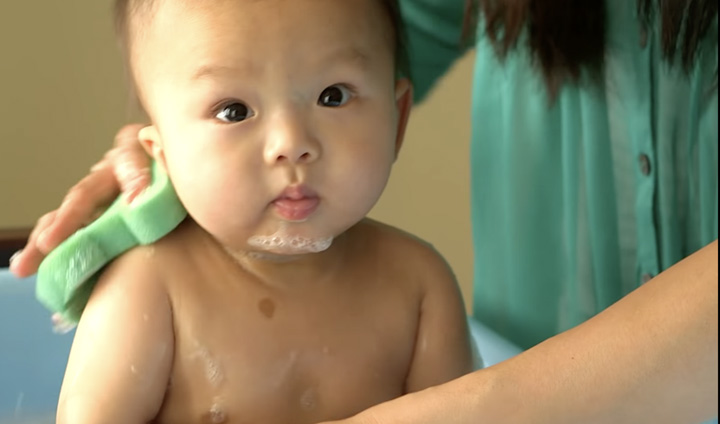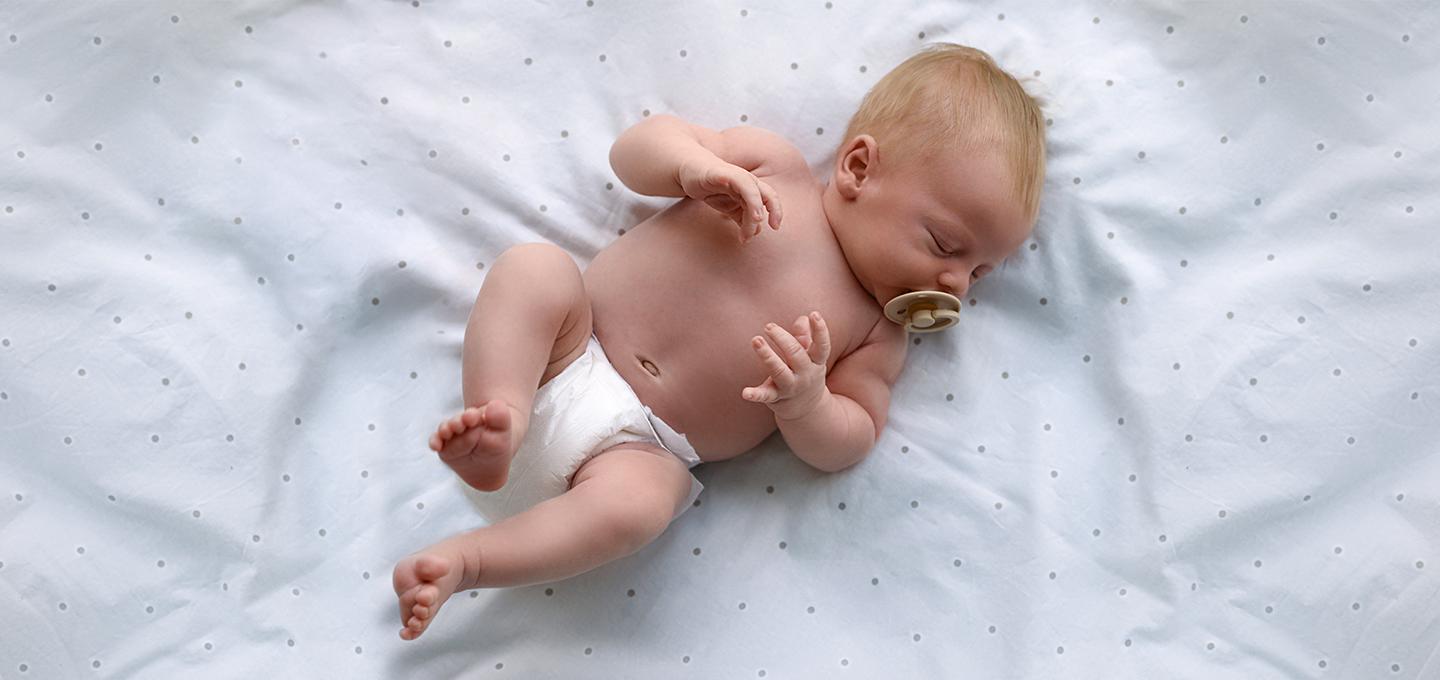
Flat Head Syndrome (Positional Plagiocephaly): Causes and Treatment


Have you noticed that one side of your baby’s head appears to be a little flatter than the other? Your little one may have what’s called positional plagiocephaly, also known as flat head syndrome, a condition that usually resolves with time and some corrective measures. Flat head syndrome can be associated with stiff neck muscles and changes in the appearance of your baby’s head, so it's important to take preventive measures and get prompt treatment if needed. Read on to learn more about positional plagiocephaly, why it happens, and how to fix it.
What Is Positional Plagiocephaly (Flat Head Syndrome)?
Positional plagiocephaly, commonly known as flat head syndrome, is a flat area that forms on the side or back of a baby’s head. The plate-like bones that make up your baby’s skull are soft and malleable so that they can make room for your baby’s rapidly growing brain. When your baby spends a lot of time lying with their head turned to one side, the weight of their head can cause a patch at the back or side of the skull to flatten.
In time, and with corrective measures, the flat patch will round out. Having flat head syndrome in babyhood won’t affect your little one’s brain growth.
Keep in mind, though, that the stiff neck that’s sometimes associated with flat head syndrome may affect early development. This is why you'll want to follow through with any repositioning techniques, physical therapy, or at-home exercises recommended by your child’s healthcare provider.
Types of Plagiocephaly
In addition to positional plagiocephaly (flat head syndrome), other types of cranial asymmetry in infants include:
Is Plagiocephaly Normal?
Positional plagiocephaly (flat head syndrome) is frequently observed in infants and is generally not dangerous. According to the Cleveland Clinic, studies indicate that up to 50% of babies experience positional plagiocephaly, typically in a very mild form.
It is generally considered a cosmetic issue and does not affect the brain or development. As infants grow and gain better head and neck strength, they naturally distribute pressure more evenly across their skulls, often leading to an improvement in head shape over time.
Signs and Symptoms of Plagiocephaly (Flat Head Syndrome)
Here are some of the signs that your baby has flat head syndrome:
What Causes Plagiocephaly (Flat Head Syndrome) in Babies?
Sleep position is a chief contributor to positional plagiocephaly—and babies spend a lot of time sleeping—but keep in mind that all babies need to be placed on their back to sleep to reduce the risk of sudden infant death syndrome (SIDS). Back sleeping is the safest position (with nothing else in the crib or bassinet), even if your little one has flat head syndrome.
The following can also be contributing factors:
About 20 percent of babies with flat head syndrome also have torticollis—a condition in which a baby’s neck muscles are stiff and they have trouble turning their head to one side.
Favoring one direction can lead to a flat patch forming on the preferred side, as it has prolonged contact with a surface. Having a flat spot can then make the torticollis worse, as your baby may be even more inclined to leave his head in that position, making the neck even tighter and more contracted.
Premature babies are more likely to have flat head syndrome because their skulls are typically softer than that of full-term babies. And premature babies may also be spending more time lying on their backs getting medical care in the neonatal intensive care unit (NICU).
Not all instances of flat head syndrome relate to your baby’s position after birth. A flat patch may start to form in the womb, for example, if your baby is in a position where the skull is pressed against your pelvis, or in the case of twins or multiples if the head is pressed against the other baby.
A flat patch can also form due to pressure on the skull in the birth canal during a vaginal birth, or if forceps or vacuum extraction was used during delivery.
How Is Plagiocephaly Diagnosed?
Your baby’s healthcare provider will be able to diagnose flat head syndrome by looking at the shape of your baby’s head. If torticollis is also suspected, your baby’s provider will look at the way your baby moves their head and neck to make a diagnosis.
If you suspect your baby has either flat head syndrome or torticollis, it’s best to schedule a checkup so your child’s healthcare provider can examine them.
How Is Positional Plagiocephaly Treated?
Given your baby must always be placed on their back to sleep to help prevent SIDS (even if they have flat head syndrome), here are some plagiocephaly treatment options and things you can do to help correct a flattened head:
Remember, as your baby grows and develops, they will begin moving around, spending time sitting, crawling, and walking, and will naturally be looking in all different directions. They’ll also be able to change sleep positions by themselves. All of this activity and movement will take pressure off the flattened area of the head.
How Is Positional Plagiocephaly Prevented?
If you’re wondering how to help avoid or prevent a flat head in newborns, the key is repositioning. If you notice that your baby tends to favor one side of their head while sleeping, it’s important to encourage them to use the other side as well. In our list above, you can find some effective strategies to consider, including:
By using these simple techniques, you can help ensure a more balanced head shape for your newborn.
When to Contact Your Healthcare Provider
If you’re concerned about your baby’s head shape or think the flat area isn’t improving over time, you can contact your healthcare provider for more advice. You can also contact them if your baby is having difficulty turning their head in both directions. This might be due to stiff neck muscles known as torticollis.
Remember, your child’s healthcare provider will keep a close eye on your baby’s skull shape, neck movement, and overall development at each well-child visit. Your little one’s development is in good hands, and the shape of your baby’s skull will round out soon enough.
FAQS AT A GLANCE
It is rarely “too late” to improve plagiocephaly, but early intervention yields the best results. Positional plagiocephaly often improves naturally as babies grow, develop stronger neck muscles, and become more mobile. Repositioning strategies are most effective before 6 months of age. For severe cases, helmet therapy may be recommended, ideally starting before 12 months. After 18 months, the skull bones harden, making significant changes less likely, though the condition is typically cosmetic and does not affect brain development.
The Big Picture
Experts say that the best treatment for positional plagiocephaly, also known as flat head syndrome, is to prevent it in the first place by ensuring your baby doesn’t spend too much time in a lying position when they’re not sleeping.
Give your baby supervised tummy time; hold your baby instead of placing them in a bouncer or stroller; and take steps to ensure they’re facing different directions when they’re in the crib by gently directing their head to the opposite side than the one they usually favor. Enticing your baby to look the opposite way by dangling toys or making funny noises and faces can also help.
If your little one has flat head syndrome, follow your healthcare provider’s treatment plan, whether it’s continuing with the repositioning techniques we’ve described above, physical therapy, special at-home exercises, or a helmet that helps treat the flat head. With a little time, the flat patch on your baby’s head will round out.
For exclusive offers and discounts on all your diaper purchases, download the Pampers Rewards App today.
- Cleveland Clinic: Benefits of Tummy Time and How to Do It Safely
- Cleveland Clinic: Plagiocephaly (Flat Head Syndrome)
- Healthy Children: Baby Helmet Therapy: Parent FAQs
- Healthy Children: When a Baby’s Head is Misshapen: Positional Skull Deformities
- Mayo Clinic: Baby's head shape: Cause for Concern?
- Mayo Clinic: ‘My baby’s Head has a Flat Spot’
Read more about Baby
Related Articles
Join a World of Support
through Pregnancy and Parenthood.
TRACK WITH TOOLS
LEARN WITH EXPERTS
GET REWARDED












